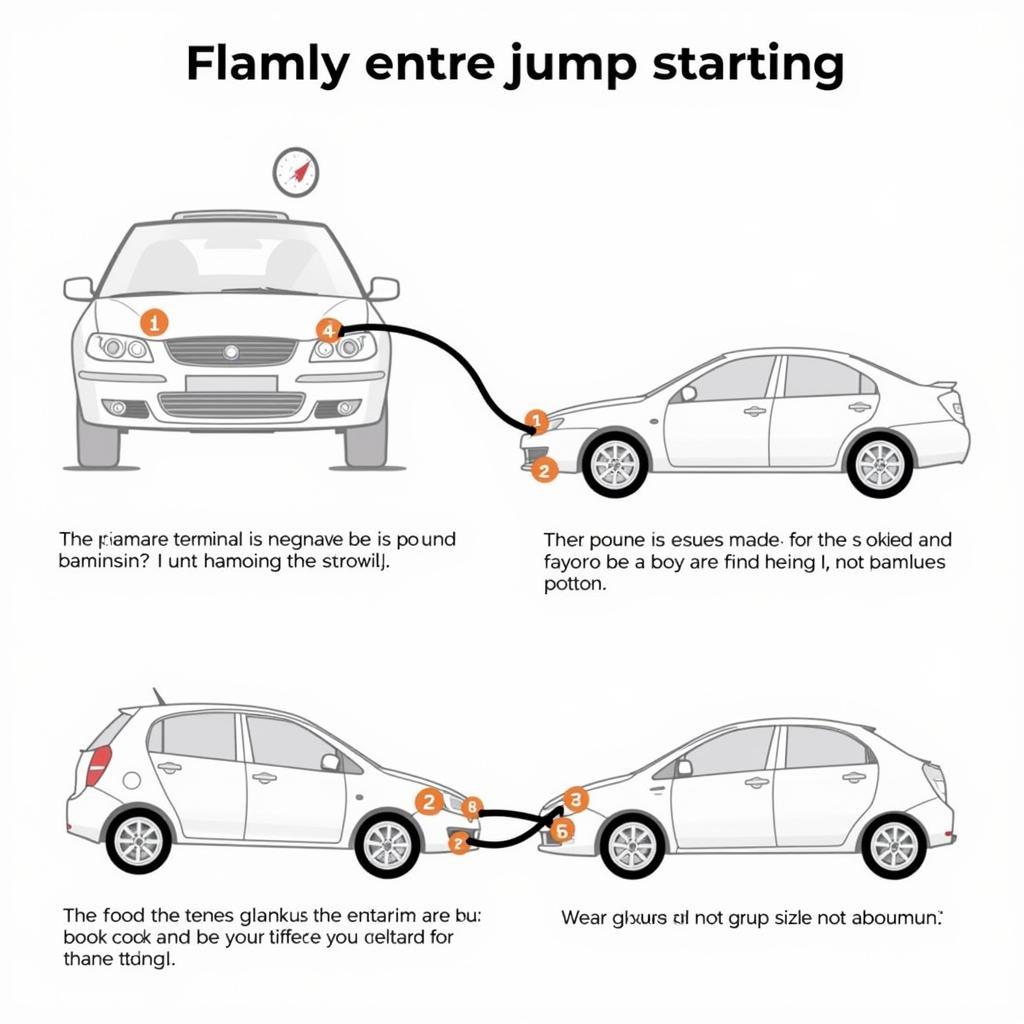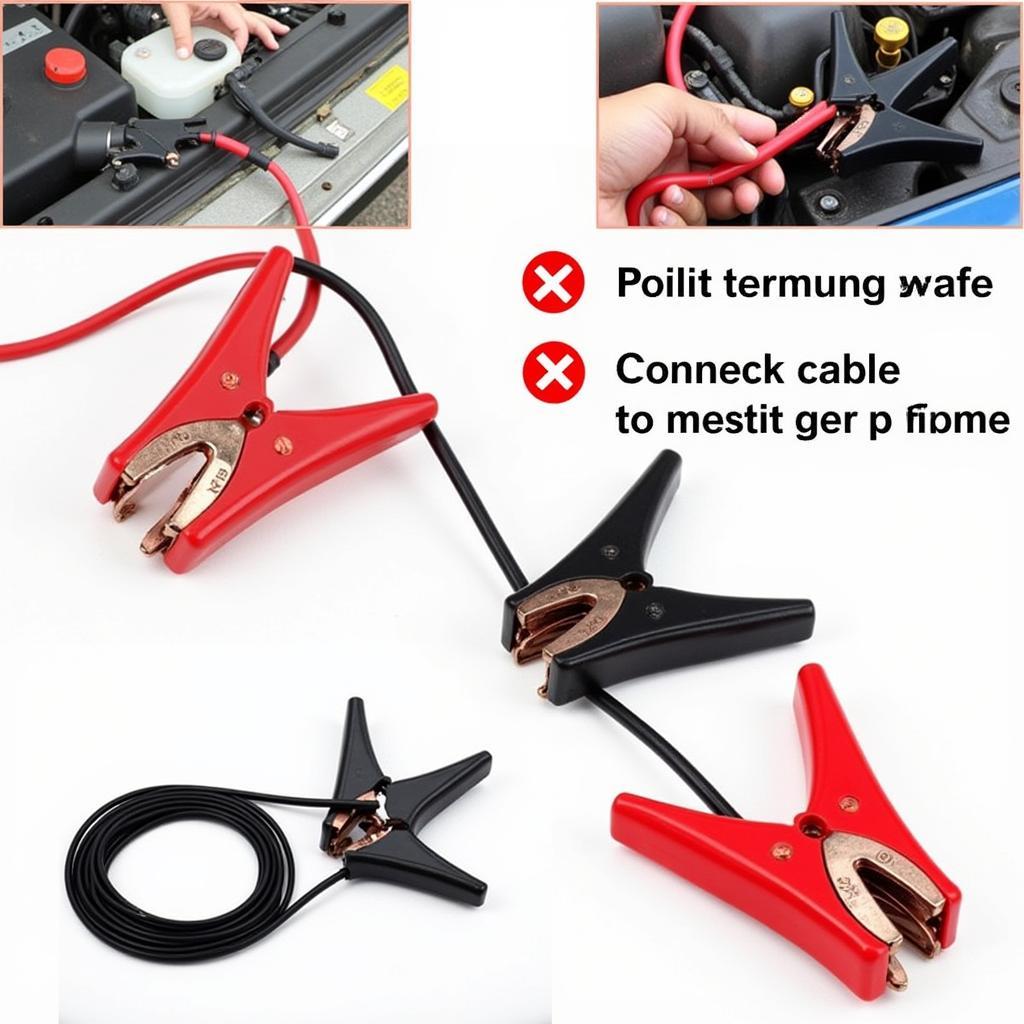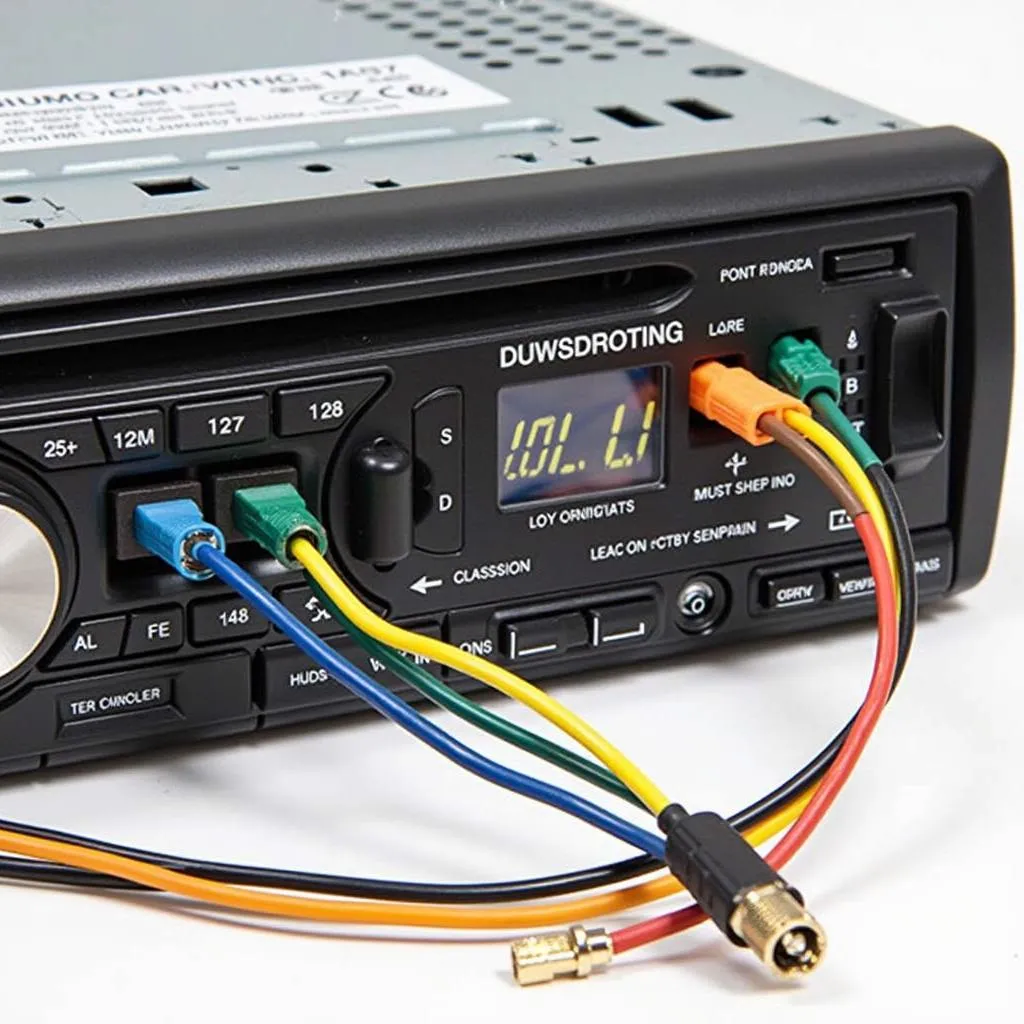Jumping a dead battery is a common roadside emergency, but many drivers are unsure of the proper procedure. Knowing how to jump start your car safely and effectively can save you time, money, and potential damage to your vehicle’s electrical system. This guide will walk you through the steps, providing expert advice and addressing common concerns.
Understanding the Basics of Jump Starting
Before we dive into the procedure, let’s clarify some fundamental concepts. A dead battery occurs when the battery no longer has enough charge to start the engine or power the vehicle’s electrical systems. This can happen for a variety of reasons, such as leaving lights on, extreme temperatures, or a faulty alternator. Jump starting involves using a working battery from another vehicle to provide a temporary boost of power to the dead battery, allowing you to start your car.
 Jump Starting Process
Jump Starting Process
Gathering the Necessary Equipment
To jump start a car, you’ll need a set of jumper cables. Make sure you choose a set with heavy-gauge cables and strong clamps. Longer cables provide more flexibility in positioning the vehicles. It’s also a good idea to keep a pair of gloves and safety glasses in your car for protection.
Step-by-Step Guide to Jump Starting Your Car
Follow these steps carefully to safely and effectively jump start a dead battery:
- Park the Vehicles: Position the working vehicle close to the one with the dead battery, ensuring they don’t touch. Turn off both engines and engage the parking brakes.
- Identify the Battery Terminals: Locate the positive (+) and negative (-) terminals on both batteries. They are usually marked clearly.
- Connect the Red Cable: Attach one end of the red (positive) cable to the positive terminal of the dead battery. Then, connect the other end to the positive terminal of the working battery.
- Connect the Black Cable: Attach one end of the black (negative) cable to the negative terminal of the working battery. Then, connect the other end to a clean, unpainted metal surface on the car with the dead battery, away from the battery itself. This serves as a grounding point.
- Start the Working Vehicle: Start the engine of the working vehicle and let it run for a few minutes to charge the dead battery.
- Start the Stalled Vehicle: Attempt to start the car with the dead battery. If it doesn’t start immediately, let the working vehicle run for a few more minutes and try again.
- Disconnect the Cables: Once the stalled vehicle starts, carefully disconnect the cables in the reverse order of connection: black cable from the grounded point, black cable from the working battery, red cable from the working battery, and finally, red cable from the restarted vehicle.
 Jumper Cable Connections
Jumper Cable Connections
What if the Car Still Won’t Start?
If your car still won’t start after attempting a jump start, the problem may lie beyond a dead battery. You might have a faulty alternator, starter, or another electrical issue. Similar to jumping a bad battery, ensuring the connections are secure is crucial. In such cases, it’s best to seek professional assistance. A qualified automotive technician can diagnose the issue and perform the necessary repairs.
Safety Precautions When Jump Starting
Safety should be your top priority when jump starting a car. Always wear safety glasses and gloves to protect yourself from sparks and acid. Ensure the vehicles don’t touch and that the cables are connected correctly to avoid short circuits or other damage. Remember, working with car batteries involves handling electrical currents, so caution is essential. Much like the steps taken for the battery dead, prioritizing safety is key.
Common Mistakes to Avoid
- Connecting cables in the wrong order: This can cause serious damage to the electrical systems of both vehicles.
- Using damaged cables: Frayed or corroded cables can be dangerous and ineffective.
- Touching metal parts of the clamps: This can create sparks and potentially cause a shock.
- Attempting to jump start a frozen battery: Frozen batteries can explode, so never attempt to jump start one. Like addressing issues such as a Range Rover Evoque low battery start engine, a correct diagnosis is paramount.
Conclusion
Jumping a dead battery is a valuable skill for any driver. By following the steps outlined in this guide and taking the necessary safety precautions, you can confidently handle this common roadside emergency. However, if you’re unsure about any part of the process or if the jump start isn’t successful, it’s always best to seek professional help. A timely check-up can prevent further issues and ensure your vehicle is running smoothly. Just like when dealing with a Honda Accord key fob not working, understanding the root cause is essential. Remember, safety and prevention are key to maintaining your vehicle’s health and ensuring your peace of mind.
FAQ
- How long does it take to jump start a dead battery? Typically, a few minutes of charging from the working vehicle is enough.
- Can I jump start a car with a smaller engine? Yes, but it may take longer to charge the dead battery.
- What should I do if the cables get hot? Disconnect the cables immediately and check for any loose or incorrect connections.
- How often should I replace my car battery? Most car batteries last between 3 and 5 years.
- Can a dead battery damage my car? In some cases, a completely discharged battery can damage the car’s electrical system.
- Is it safe to jump start a car in the rain? Yes, as long as you follow the proper safety precautions and avoid touching any wet surfaces.
- What are some signs of a failing alternator? Dim headlights, flickering interior lights, and a warning light on the dashboard are common signs.

